From Rudy Castorina (Ocean Media Lab) & Dr Fabrice Collard (Ocean Data Lab)
As the tall ship Statsraad Lehmkuhl sailed down the Portuguese shelf, students the Ocean Training Course students engaged in a powerful exploration of the upper ocean and the invisible dynamics that shape everything from waves to life.
Three Copernicus satellites provide a layered view.
Sentinel-1, which carries a synthetic aperture radar, captures wind patterns on the ocean surface, revealing wind speeds near the coast and a signature of internal waves as they bounce on the shelf break. This drives air–sea interactions, a key factor in surface turbulence and ocean mixing.
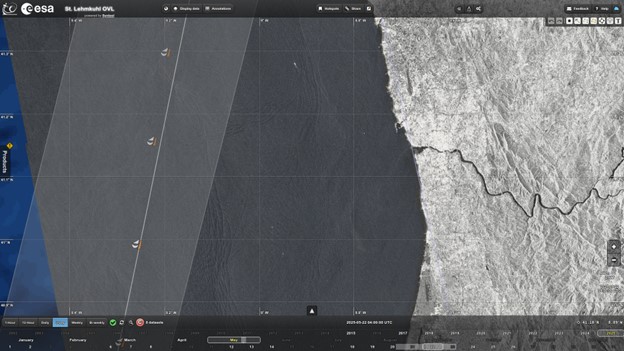
Sea-surface roughness from Copernicus Sentinel-1. (Ocean Virtual Lab)
The Sentinel-1 image above off sea-surface roughness shows how internal waves are detected on the eastern side of the shelf break, offshore from the city of Porto. These internal waves were also recorded on the Statsraad Lehmkuhl’s Acoustic Doppler Current Profiler.
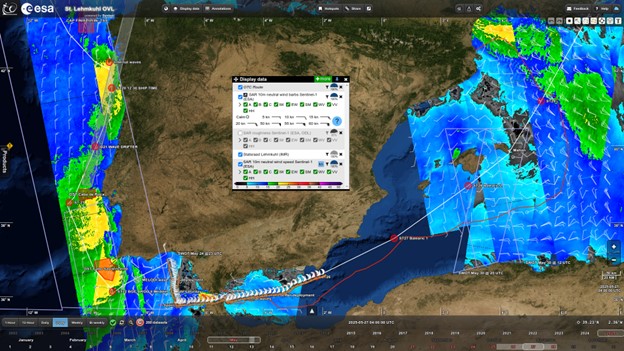
Coastal winds measured by Sentinel-1. (Ocean Virtual Lab)
For three days, these coastal winds drove surface waters offshore around the Iberian Peninsula, causing upwelling. Ship track (white line) and stations, and the Spanish Exclusive Economic Zone (red) highlight the route of ESA’s Ocean Training Course. See also Ocean Virtual Lab: https://odl.bzh/tIkkNktN
Sentinel-2, which carries a multispectral imager, provides an optical view of coastal upwelling and sunglint, modulated by sea-surface roughness. Sunglint over the water not only traces the manifestation of internal waves at the surface, but also surface current swirls and fronts affected by the abrupt shift from the deep Atlantic to the continental shelf.
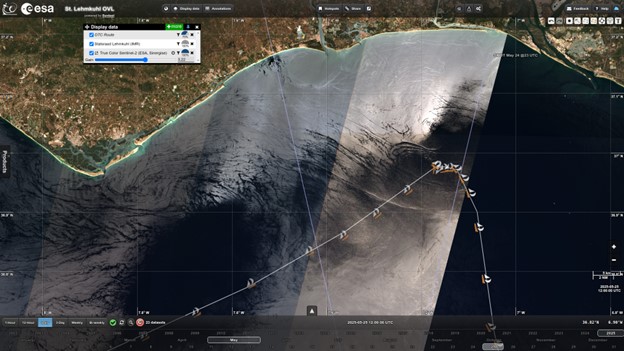
Sentinel-2 captures sunglint. (Ocean Virtual Lab)
Internal waves and biogenic films are deformed by ocean currents, visible in this Sentinel-2 image of sunglint above. It was captured on 25 May 2025 while a manta net to measure microplastics was trawled from the Statsraad Lehmkuhl. See also Ocean Virtual Lab: https://odl.bzh/Vr9LbazI
Sentinel-3 carries three instruments, one of which is the Ocean and Land Colour Instrument to track concentrations of marine chlorophyll – an indicator of phytoplankton. Continental shelf upper-ocean dynamics, such as upwelling brings deep nutrient-rich waters towards the surface.
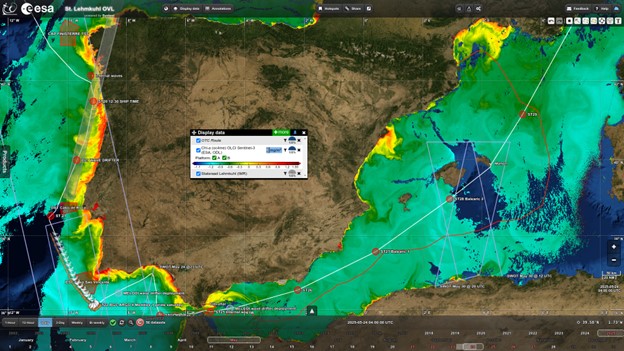
Sentinel-3 captures concentrations of chlorophyll. (Ocean Virtual Lab)
The image above shows how Sentinel-3’s Ocean and Land Colour Instrument captured concentrations of chlorophyll on 24 May, highlighting upwelling along the western coast of the Iberian Peninsula. The Ocean Training Course ship track is shown in white with the CTD stations in red. Also see Ocean Virtual Lab: https://odl.bzh/zFgTdof1
Nazaré in Portugal is famous for its towering waves, and near here students, guided by Sentinel-3 altimetry-derived currents and Copernicus Marine Service wave forecasts, released wave drifters into the swell.

As the Statsraad Lehmkuhl sails near Nazaré, students gently lower a MELODI wave drifter buoy, custom-painted and carrying a drifting music box with handwritten notes from the crew. A symbolic gesture to the ocean, the buoy begins its journey across the Atlantic, tracing surface currents while carrying stories meant to return, if the sea allows. (Ocean Media Lab)
The experiment isn’t just scientific, it is also of cultural significance because an artist reimagined the buoys and a music box was attached containing handwritten notes from the students. The hope is that these tokens will help us to retrieve the buoys for further analysis, if washed up on a beach.
From satellite images of sunglint and surface winds to deep-water nutrients rising to the surface, these observations reveal how the continental shelf shapes the motion of the ocean and life within. And from the deck of this tall ship, students are learning to read the signs – both from the sky and from the sea.
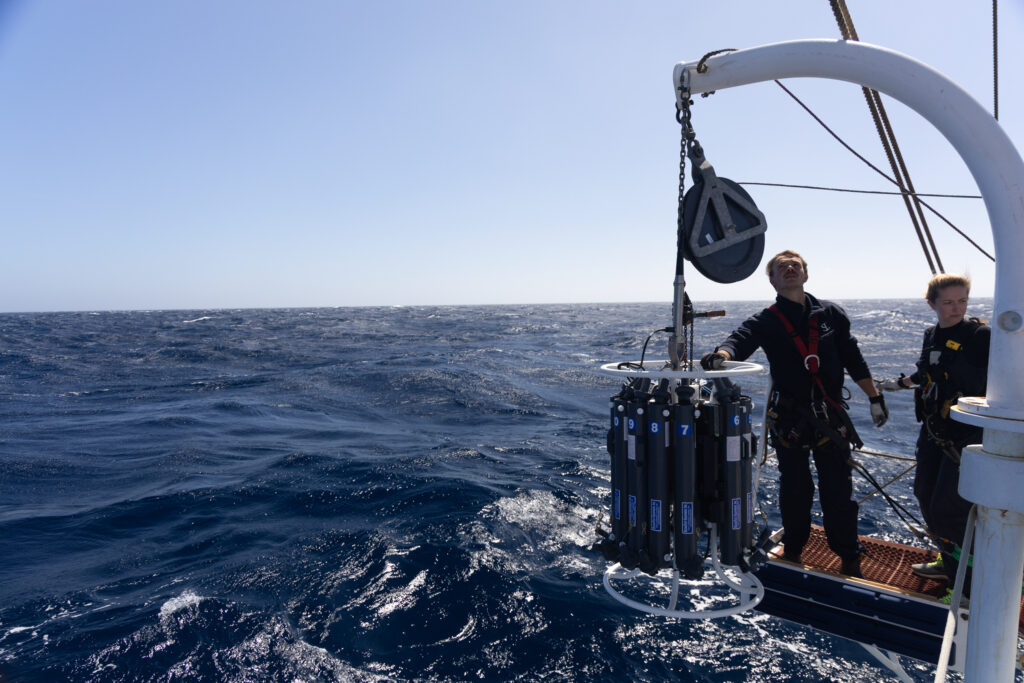
Crew David Jakobsen & student Louise Balmas ready to launch the CTD rosette. (Ocean Media Lab)

CTD rosette entering the waters off Portugal. (Ocean Media Lab)
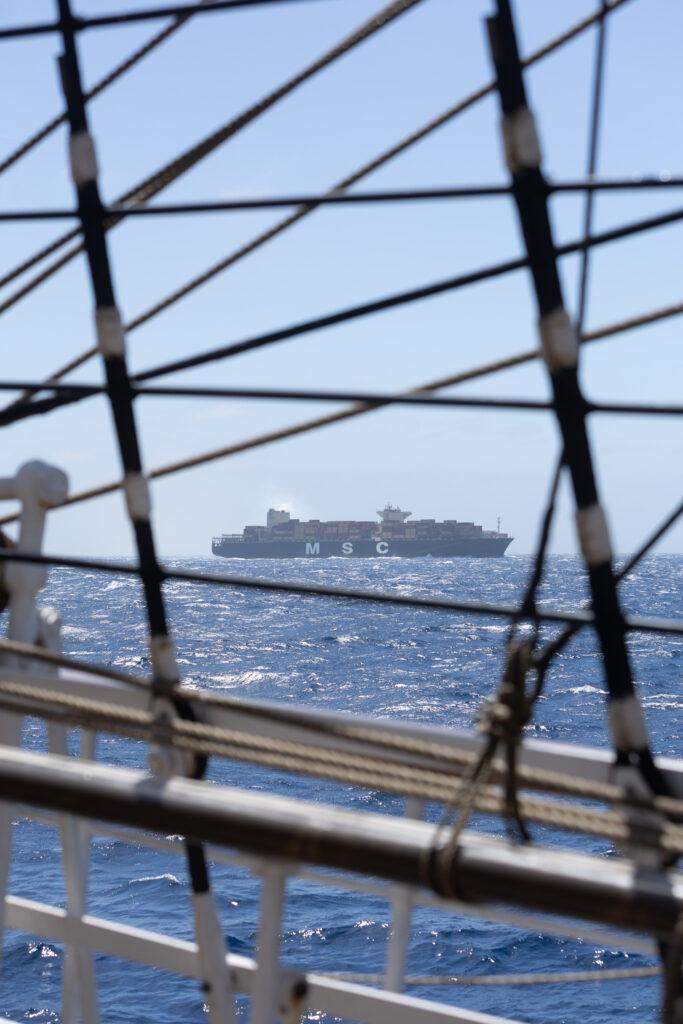
A modern container ship crosses the horizon signals that the historic tall ship is getting closer to civilization after being away from it all at sea. (Ocean Media Lab)
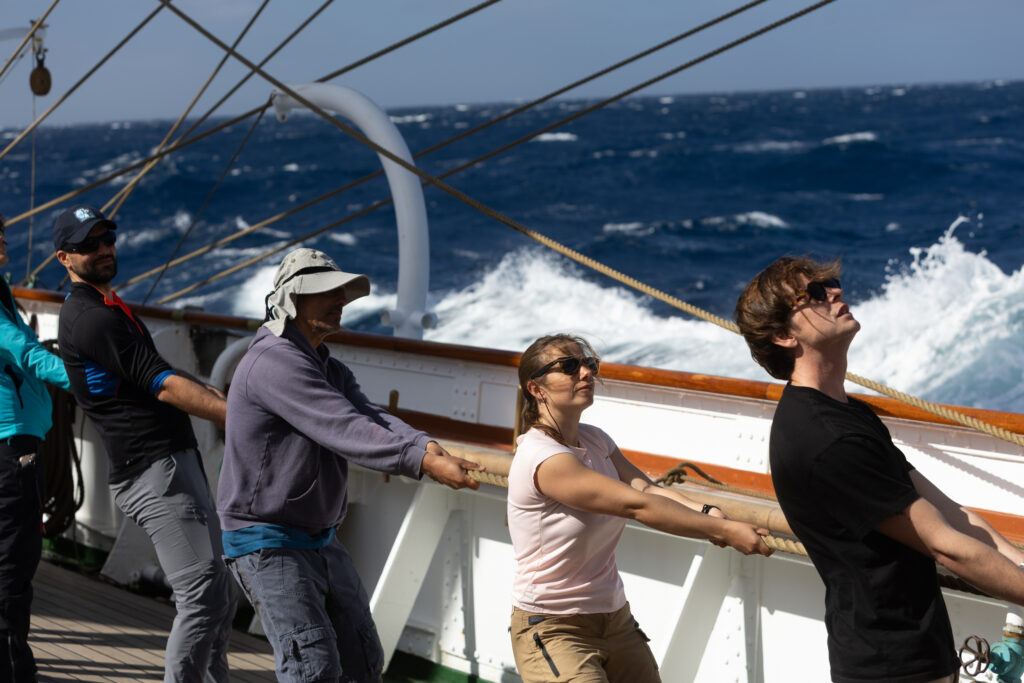
An astronaut, lecturers and students haul lines together in strong winds, learning by doing at sea. (Ocean Media Lab)
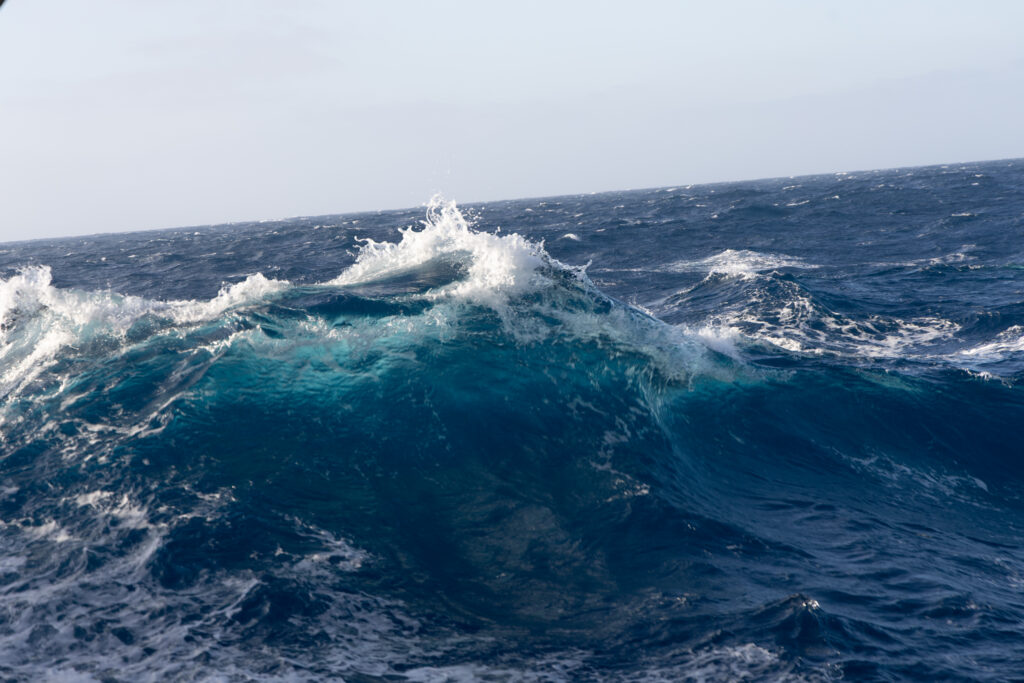
Wave crests off the Portuguese shelf, revealing the deep blue force that satellites trace from above. This is the frontier where remote sensing meets the real sensation – the ship feels every roll. (Ocean Media Lab)

Below deck, science takes centre stage. Florian Le Guillou, former ESA research fellow present satellite data analyst, decodes sunglint and internal waves – turning maps of ocean colour into science. (Ocean Media Lab)

Saskia Ruehl (Digital Marine Scientist at Plymouth Marine Laboratory) and student Brishan Kalyan (South African Environmental Observation Network and Nelson Mandela University) looking at plankton with the curiosity microscope. (Ocean Media Lab)
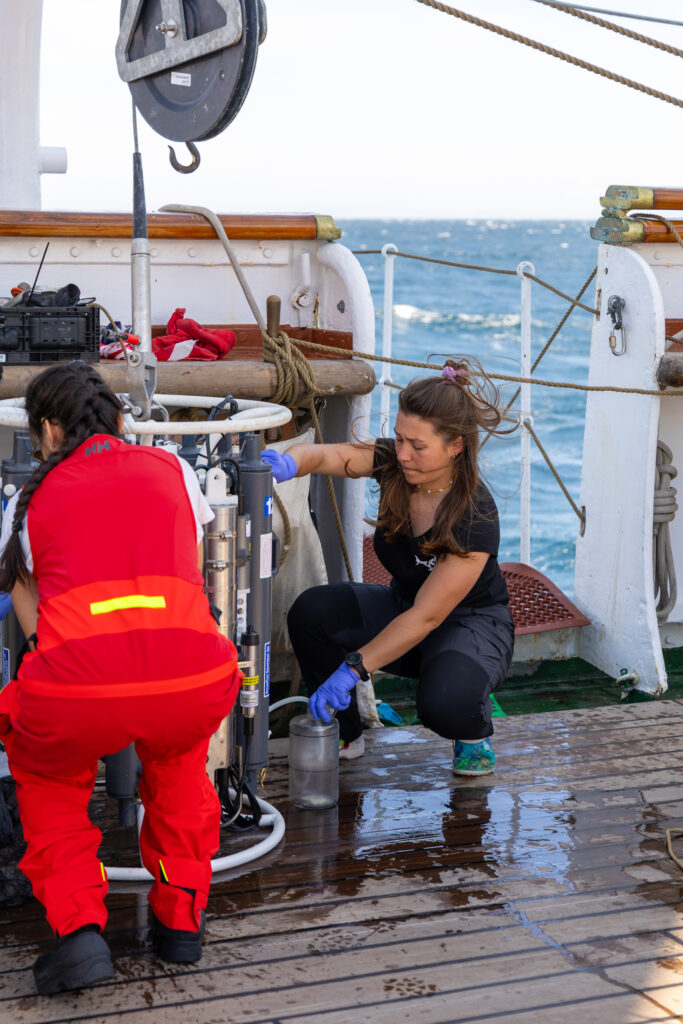
Lecturer Sejal Pramlall, PhD candidate at the University of Bergen, and student Lou Àndres collecting water. (Ocean Media Lab)
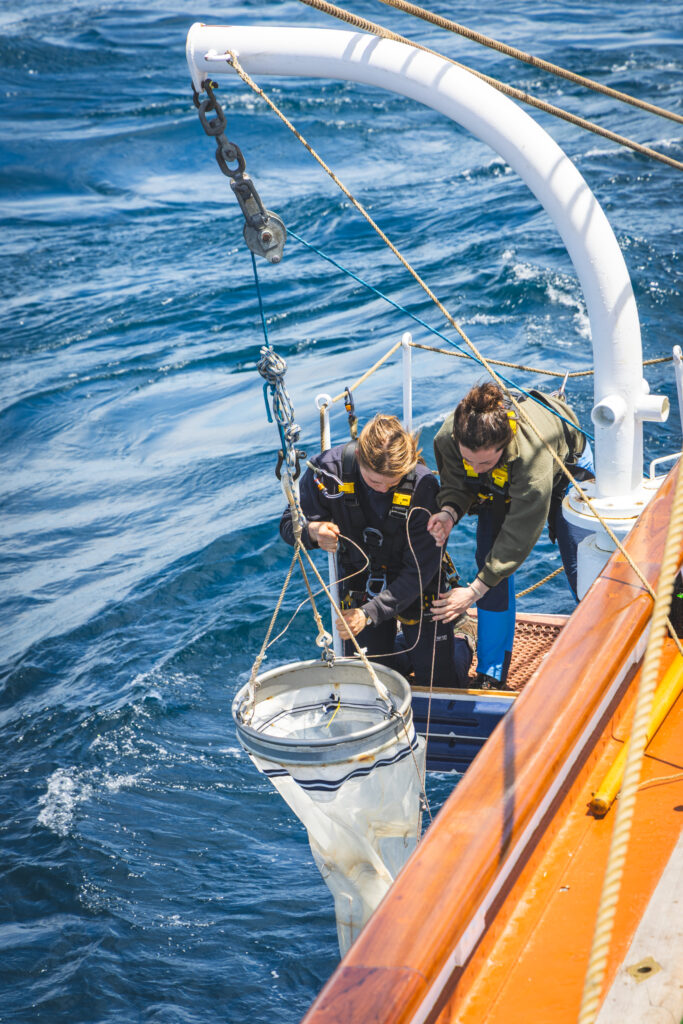
Crew Tuva Sandven and student Eva Chamorro coordinate the launch of a fine-mesh plankton net. (Ocean Media Lab)
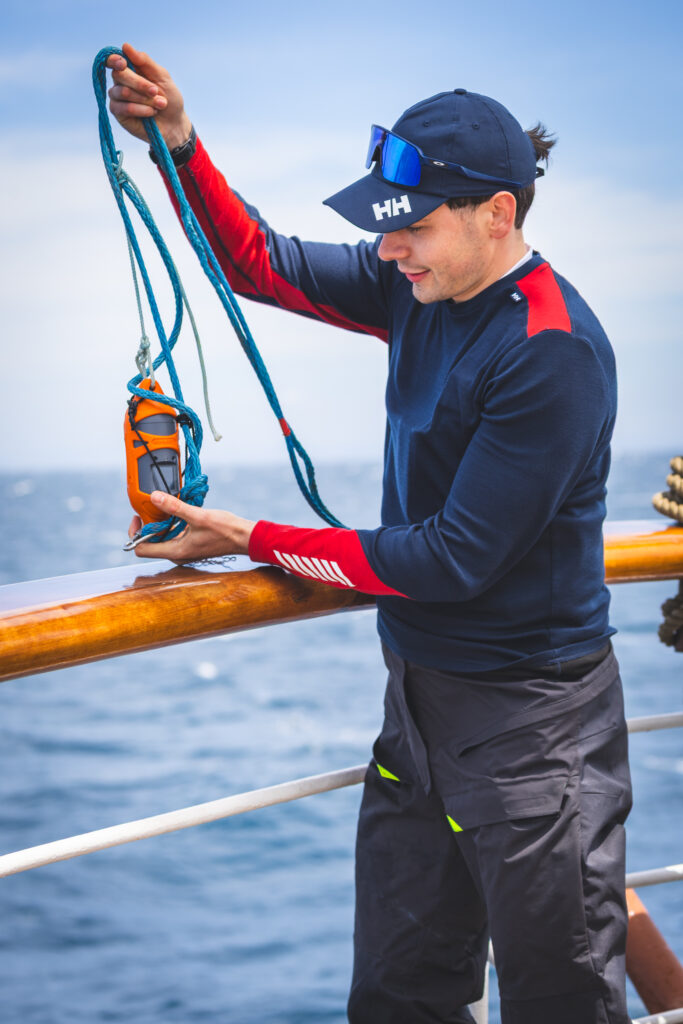
Preparing the launch of the ‘castaway’ CTD to make a horizontal profile. (Ocean Media Lab)
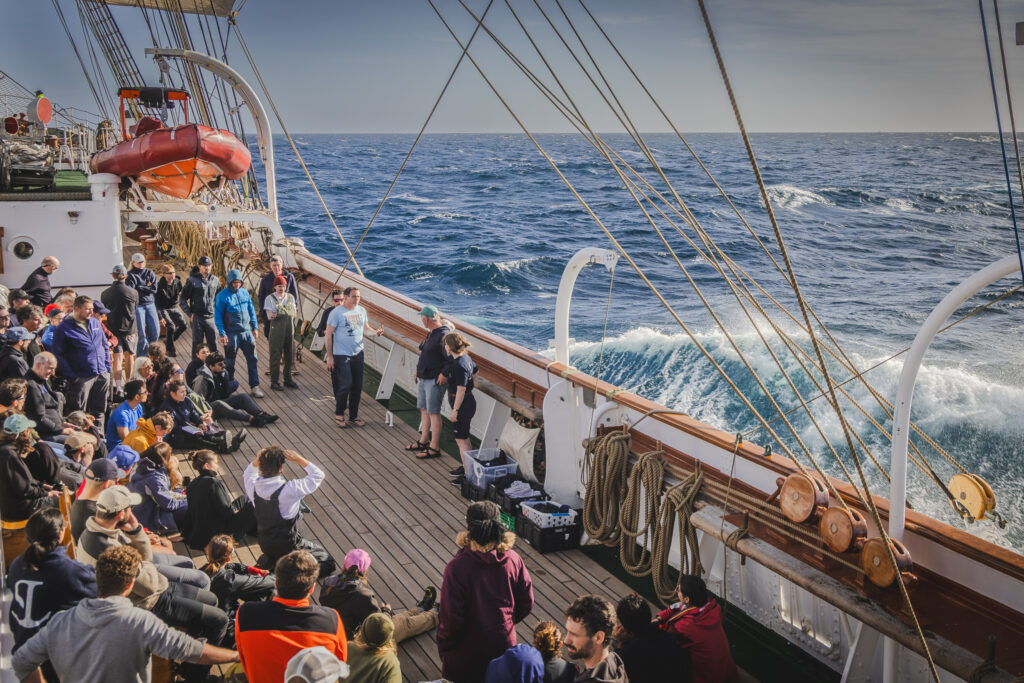
Briefing on the main deck brings everyone together. With the Atlantic rolling, students and crew work on science plans, safety, and a shared purpose. (Ocean Media Lab)
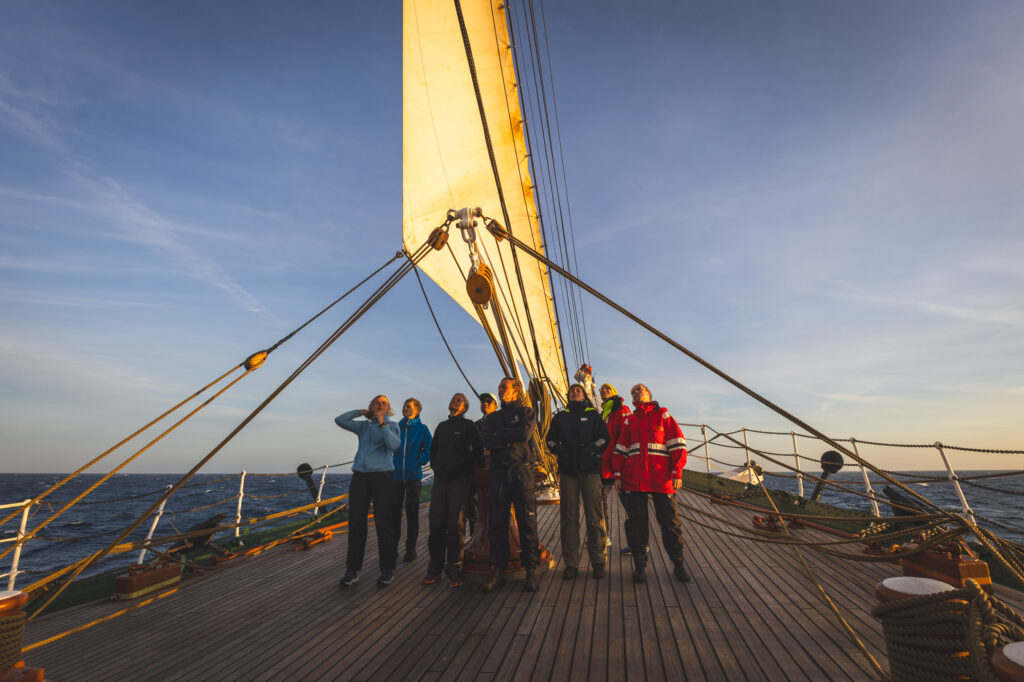
At the golden hour, students, crew and citizen scientists gather at the bow – eyes fixed aloft, learning not just the mechanics of sailing, but the mindset of observing the ocean from space. (Ocean Media Lab)
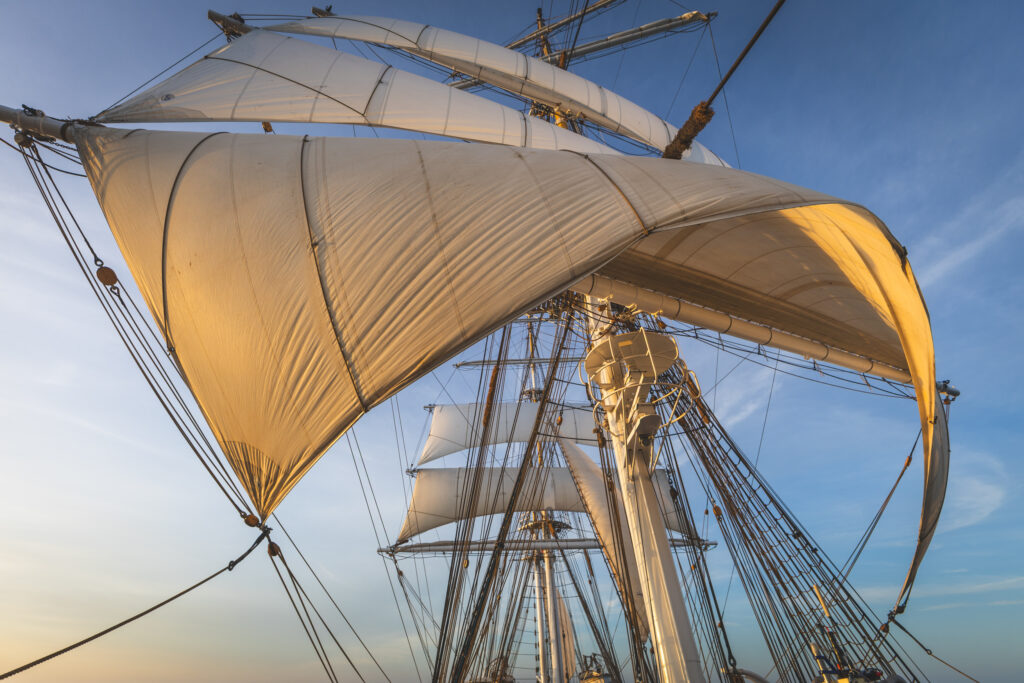
The sails aglow with the last light of day. Like satellite images that capture wind patterns from orbit, here the canvas tells its own story of direction, force and flow. (Ocean Media Lab)
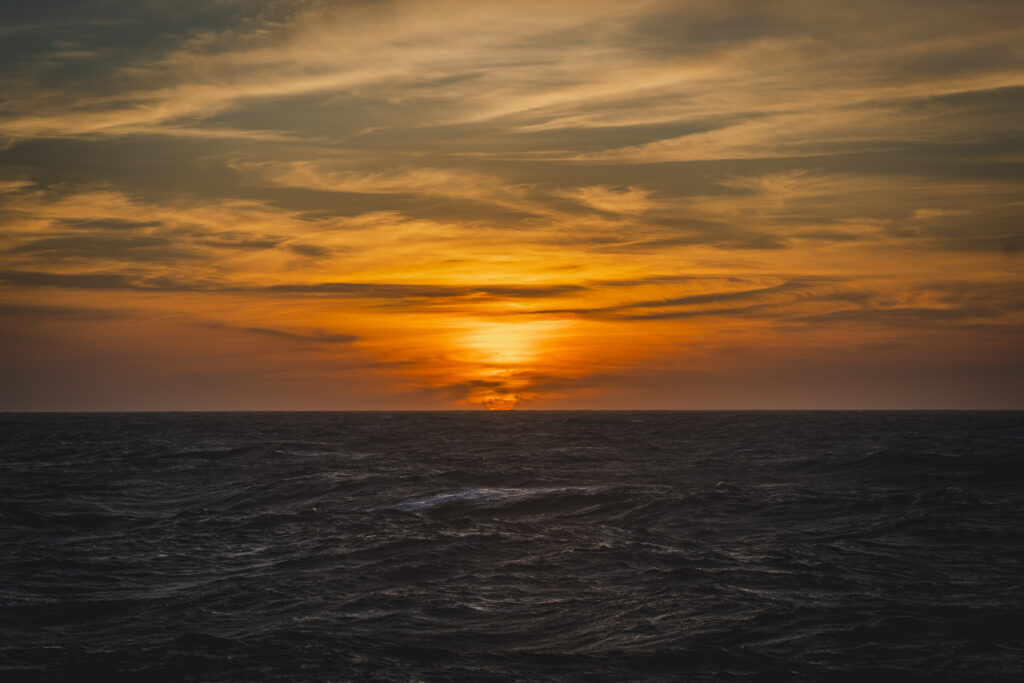
The sun sinks into the Atlantic – an everyday event, but one loaded with meaning out here. Every sunset reminds us of the rhythms we’re here to study, and protect. (Ocean Media Lab)
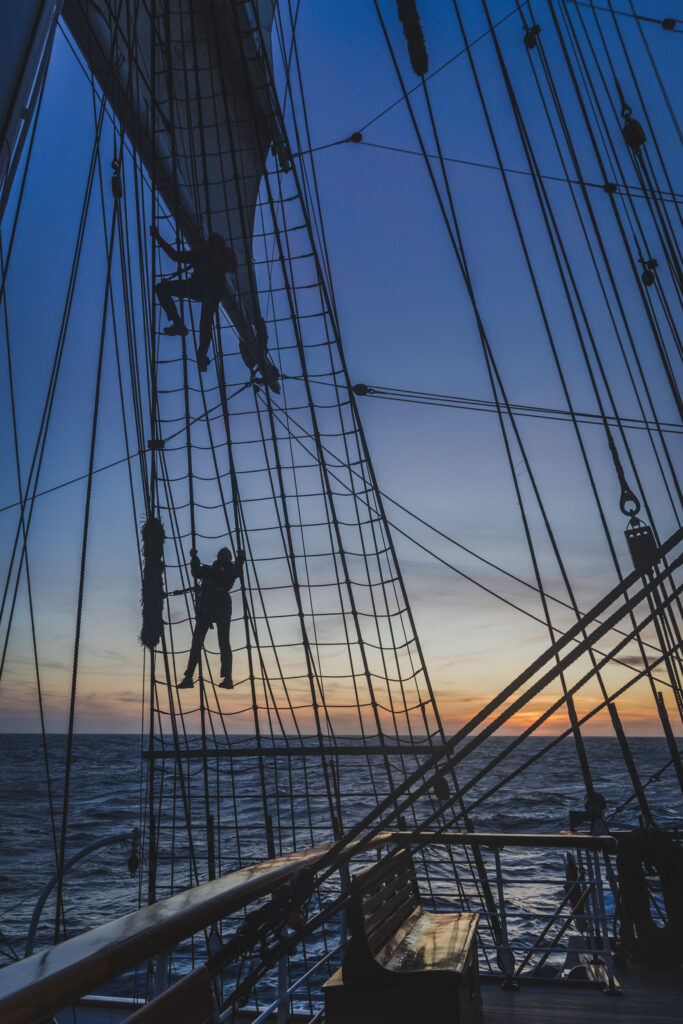








Discussion: 2 comments
I noticed a small typo in the last included link “https://odl.bzh/zFgTdof”. It looks like a “1” is missing at the end. It should be “https://odl.bzh/zFgTdof1”. 😅
Thanks for noticing!